-
[in Japanese]
2017Volume 34Issue 1 Pages
1_1
Published: January 25, 2017
Released on J-STAGE: March 25, 2017
JOURNAL
FREE ACCESS
-
Fumihiro KUMENO, Naoyasu UBAYASHI, Norihiro YOSHIDA
2017Volume 34Issue 1 Pages
1_2
Published: January 25, 2017
Released on J-STAGE: March 25, 2017
JOURNAL
FREE ACCESS
-
Katsuro INOUE
2017Volume 34Issue 1 Pages
1_3-1_7
Published: January 25, 2017
Released on J-STAGE: March 25, 2017
JOURNAL
FREE ACCESS
-
Shinji KUSUMOTO
2017Volume 34Issue 1 Pages
1_8-1_11
Published: January 25, 2017
Released on J-STAGE: March 25, 2017
JOURNAL
FREE ACCESS
-
Naoyasu UBAYASHI, Akira FUKUDA
2017Volume 34Issue 1 Pages
1_12-1_17
Published: January 25, 2017
Released on J-STAGE: March 25, 2017
JOURNAL
FREE ACCESS
-
Atsuhiro GOTO, Hideaki SONE, Atsuko MIYAJI, Kazutoshi FUJIKAWA, Hideki ...
2017Volume 34Issue 1 Pages
1_18-1_23
Published: January 25, 2017
Released on J-STAGE: March 25, 2017
JOURNAL
FREE ACCESS
-
Satoshi SAGA, Chiemi WATANABE, Ayumi KIZUKA, Yoshihide CHUBACHI, Tohru ...
2017Volume 34Issue 1 Pages
1_24-1_28
Published: January 25, 2017
Released on J-STAGE: March 25, 2017
JOURNAL
FREE ACCESS
-
Kenji KONO
2017Volume 34Issue 1 Pages
1_32-1_38
Published: January 25, 2017
Released on J-STAGE: March 25, 2017
JOURNAL
FREE ACCESS
-
Kenichi KOURAI, Katsuhiro UENO
2017Volume 34Issue 1 Pages
1_39-1_51
Published: January 25, 2017
Released on J-STAGE: March 25, 2017
JOURNAL
FREE ACCESS
-
Yukiyoshi KAMEYAMA
2017Volume 34Issue 1 Pages
1_52-1_57
Published: January 25, 2017
Released on J-STAGE: March 25, 2017
JOURNAL
FREE ACCESS
-
Kohei SUENAGA
2017Volume 34Issue 1 Pages
1_58-1_61
Published: January 25, 2017
Released on J-STAGE: March 25, 2017
JOURNAL
FREE ACCESS
-
Masahiro SAKAI
2017Volume 34Issue 1 Pages
1_62-1_66
Published: January 25, 2017
Released on J-STAGE: March 25, 2017
JOURNAL
FREE ACCESS
-
Takehide SOH, Mutsunori BANBARA, Naoyuki TAMURA
2017Volume 34Issue 1 Pages
1_67-1_80
Published: January 25, 2017
Released on J-STAGE: March 25, 2017
JOURNAL
FREE ACCESS
In recent years, the performance of SAT solvers have been enormously improved and its applications are enlarged in various domains. However, SAT solvers are not adequate to directly solve problems such as the one including arithmetic constraints which has many realistic applications since the input of SAT solvers is propositional formulae of conjunction normal form. Therefore, there have been researches for systems extending and/or utilizing SAT solvers so that these can adopt more rich expressions. In this paper, we explain one of such systems—SAT-based constraint programming systems which are the integration of the performance of SAT solvers and the rich expressions of constraint programming systems. We also briefly explain related technologies of SAT-based constraint programming systems.
View full abstract
-
Kenji YASUNAGA
2017Volume 34Issue 1 Pages
1_81-1_92
Published: January 25, 2017
Released on J-STAGE: March 25, 2017
JOURNAL
FREE ACCESS
There have been a number of studies using the approaches of game theory in designing cryptographic primitives and protocols. This article describes how game theory is used in cryptographic research. In particular, we explain rational players in cryptographic protocols, characterizations of security notions by equilibrium concepts, and delegation of computation using reward.
View full abstract
-
[in Japanese]
2017Volume 34Issue 1 Pages
1_94-1_95
Published: January 25, 2017
Released on J-STAGE: March 25, 2017
JOURNAL
FREE ACCESS
-
Marcel TAEUMEL, Stephanie PLATZ, Bastian STEINERT, Robert HIRSCHFELD, ...
2017Volume 34Issue 1 Pages
1_103-1_118
Published: January 25, 2017
Released on J-STAGE: February 16, 2017
JOURNAL
FREE ACCESS
Development teams benefit from version control systems, which manage shared access to code repositories and persist entire project histories for analysis or recovery. Such systems will be efficient if developers commit coherent and complete change sets. These best practices, however, are difficult to follow because multiple activities often interleave without notice and existing tools impede unraveling changes before committing them. We propose an interactive, graphical tool, called THRESHER, that employs adaptable scripts to support developers to group and commit changes—especially for fine-granular change tracking where numerous changes are logged even in short programming sessions. We implemented our tool in Squeak/Smalltalk and derived a foundation of scripts from five refactoring sessions. We evaluated those scripts' precision and recall, which indicate a reduced manual effort because developers can focus on project-specific adjustments. Having such an interactive approach, they can easily intervene to accurately reconstruct activities and thus follow best practices.
View full abstract
-
Ryoma SIN'YA
2017Volume 34Issue 1 Pages
1_119-1_124
Published: January 25, 2017
Released on J-STAGE: February 16, 2017
JOURNAL
FREE ACCESS
There are several well-known techniques for proving non-regularity of a given language, e.g., Myhill-Nerode theorem or Pumping lemma. In this paper, we propose a new technique for proving non-regularity that is completely different from all previously known techniques. Our technique is based on a measure of a language, and provides a geometric intuition for the non-regularity. We demonstrate, with a few examples, the usefulness of our technique. Further, we pose some future work and conjectures which generalize our technique.
View full abstract
